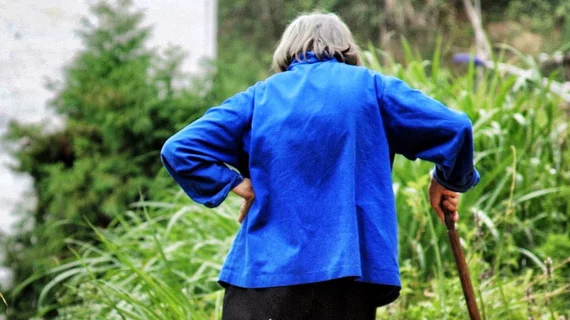Researchers have established normal ranges of bone density in a part of the lumbar spine that is routinely imaged incidentally. Their primary aim is to equip radiologists with data that can be referred to when reading chest and abdominal CTs so the reader can opportunistically cross-screen for osteoporosis and check for compression fractures.
Radiology published the work online March 26.
Perry Pickhardt, MD, of the University of Wisconsin, Ronald Summers, MD, PhD, of the NIH and colleagues homed in on the first lumbar vertebra (L1). Their objective was to build a base of L1 trabecular attenuation values across all adult ages so that bone mineral density could be measured on CT performed for other clinical indications.
The team constructed reference data from more than 20,000 abdominal and thoracic CT scans performed on adults (56 percent women) at 120 kV with and without intravenous contrast.
Along the way they found age-related bone density loss measured by L1 trabecular attenuation at CT “is fairly constant and predictable,” averaging 2.5 Hounsfield units per year.
They further found that aging women and men have similar mean L1 trabecular attenuation values, although the decline speeds up in women after menopause.
In the study report, the authors underscored that the attenuation values they established only apply to CT performed at 120 kV.
“It is our hope that this study will further encourage radiologists who interpret CT images to routinely assess for L1 trabecular attenuation (and compression fractures) ... because undiagnosed low bone-mineral density and osteoporosis are typically encountered on a daily basis in routine practice,” Pickhardt et al. wrote. “In the future, automated methods are likely to become widely available, which could provide for objective assessment at both the individual patient level and for large patient cohorts or populations.”
In an accompanying opinion piece, Andrew Smith, MD, PhD, of the University of Alabama comments that screening for loss of bone density via CT performed for other reasons is an overlooked opportunity, not least because it requires no additional patient time or cost, scanner equipment or radiation exposure.

